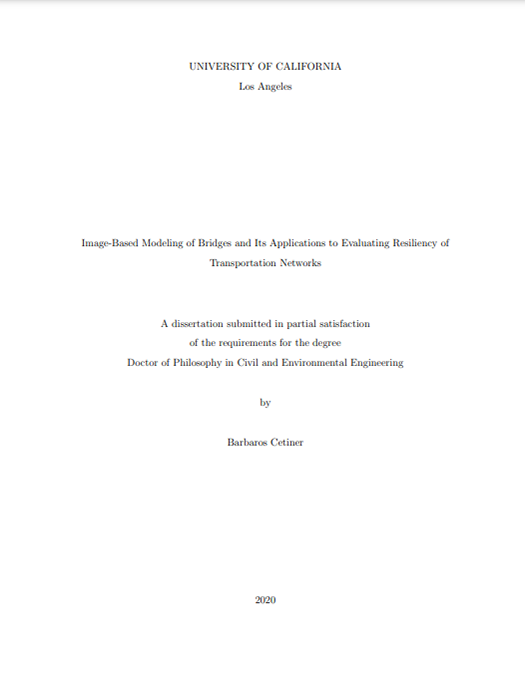Date: June 1, 2020
Author(s): Barbaros Cetiner
Abstract
Modern urban areas are heavily dependent on transportation networks to sustain their economic life. Hence, when vital components of a regional network are disrupted, economic losses are inevitable. As evidenced by 1989, Loma Prieta and 1994, Northridge earthquakes, the seismic damages experienced by bridges alone result in extensive traffic delays and rerouting, not only hindering emergency response but also causing indirect economic losses that far surpass the direct cost of damage to infrastructure. Nevertheless, in many areas of the U.S., transportation networks lack the resilience required to sustain the potential demands of natural hazards.
Traditional hazard assessment methods, in theory, provide the tools required for predicting the vulnerabilities associated with natural hazards. Nonetheless, due to their abstractions of the complex infrastructure and the coupled regional behavior, they often fall short of that expectation. This study proposes a semi-automated image-based model generation framework for producing structure-specific models and fragility functions of bridges. The framework effectively fuses geometric and semantic information extracted from Google Street View images with centerline curve geometry, surface topology, and various relevant metadata to construct extremely accurate geometric representations of bridges. Then, using class statistics available in the literature for bridge structural properties, the framework generates structural models. Both the performance of the geometry extraction procedure and the structural modeling method proposed here are validated by comparison against the structural model of a real-life bridge developed based on as-built drawings.
In principle, these models can be utilized to assess physical damage for any type of hazard, but in this study, the focus is limited to seismic applications. Thus to relate the damage resulting from seismic demands from ground shaking, bridge-specific fragility functions are developed for 100 bridge structures in the immediate surroundings of Ports of Los Angeles and Long Beach. Using these fragility curves, the physical damage resulting from a magnitude 7.3 scenario earthquake on Palos Verdes fault is predicted. Subsequently, the effects of the bridge infrastructure damage to the transportation patterns in the Los Angeles metropolitan area are investigated in terms of various resilience metrics.


